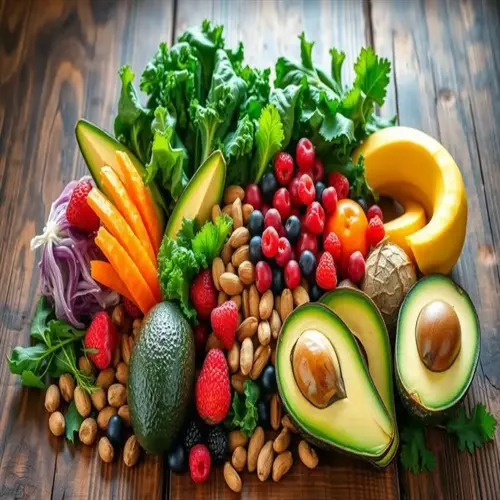10 Science-Backed Ways to Fall Asleep Faster

Written by
Tran Quang
Reviewed by
Prof. Graham Pierce, Ph.D.Master how to fall asleep faster with science-backed caffeine cutoff 10 hours pre-bed.
Time workouts before 6 PM to lower core temperature for quicker sleep onset.
Enable device night mode 2 hours pre-bed to minimize melatonin-suppressing blue light.
Set bedroom temperature to 60-67°F (15-19°C) for 20-30% faster sleep onset.
Practice military relaxation technique to fall asleep in under 120 seconds nightly.
Combine 2-3 strategies for exponential improvement in sleep quality and efficiency.
Article Navigation
Are you lying awake with a swirling mind full of worries and feelings? Learning how to fall asleep more easily can transform your nights. Sleep latency, or the time it takes you to fall asleep, should ideally be 10 minutes to 20 minutes. Longer periods will leave you tired the following day and lessen your focus and energy.
One-third of adults are sleep-deprived. This contributes to serious health issues, including decreased immune system function. This is a fight I know all too well, having experienced it firsthand. Tossing and turning for hours on end seems endless. This is why I developed these 10 scientifically proven methods. They really do offer some solutions for falling asleep faster, starting tonight.
Diet and Nutrition Timing
Timing your caffeine consumption is important. Stop drinking caffeine at least 10 hours or more before sleep. This allows your adenosine receptors to clear. Caffeine blocks these receptors, allowing you to stay alert. After 10 hours, it clears your system. If you sleep at midnight, you should stop drinking caffeine by 2 PM. This will be true regardless of time zone.
Eat complex carbohydrates, such as sweet potatoes or oatmeal, for dinner. Avoid eating simple carbohydrates, such as white bread. They induce the prolonged release of serotonin, ensuring a smooth-running metabolism and regulating the sleep-wake pattern. The turkey is the food richest in tryptophan, with 0.3 grams for an 85-gram portion of turkey. Milk is inferior in tryptophan, with 0.1 gram of tryptophan per 240 ml of milk. These foods will also help the body naturally produce melatonin.
Exercise Impact on Sleep
Light exposure in the morning aligns the circadian rhythm. Natural light sends a message to the brain to stop producing melatonin. Later, this melatonin production allows you to sleep. Try exercising outdoors before 10 a.m. This helps adjust your internal clock to time your sleep better.
Avoid vigorous activities, such as HIIT/interval training, later in the day. They raise core body temperature 2-3 degrees F (1-1.5 degrees C). This heat reservoir stays in the body for 3-4 hours. This interferes with sleep onset. I discovered this when evening workouts kept me awake, so I opted for gentler activities after 6 PM.
Evening yoga positions provide an effective means of relaxation in the evening. Hold your props six to twelve inches (15-30 centimeters) from the wall, placing your head or shoulders against the wall for support. This distance gives you stability in your positions without strain. Engaging in aerobic exercise in the morning helps oxygenate your body efficiently. Doing anaerobic exercise in the evening, however, creates too great a stimulation. Modify the exercise according to your schedule.
Screen Time Reduction
Blue light at a wavelength of 480 nm reduces melatonin production by 50 percent in two hours. Melatonin is the hormone that governs your natural sleep cycle. Your phone emits blue light at wavelengths stronger than those of TVs, specifically in the range of 415-455 nm, compared to TVs, which emit blue light at wavelengths of 450-500 nm. This makes the phone more harmful than the TV in the evening before bedtime.
I find that app blockers, such as Freedom or Cold Turkey, are useful tools. They reduced pre-sleep screen time by about 70% for many users. They should be automatically scheduled to go off two hours before bed. They help in blocking social networking or games that keep the brain more engaged. The change in this habit helped me tremendously with my sleep onset time.
For your nighttime reading, switch to eink screens. They reflect ambient light at 35-45 lumens, but LCD screens put out over 300 lumens directly into your eyes. This is a pleasant, low-light setting that is reminiscent of reading a paper book. It will allow your eyes to relax and prevent disruption to melatonin production. Try it out with an e-reader tonight.
Perfect Sleep Environment Setup
Keep your bedroom temperature at 60-67°F (15-19°C). This range produces 20-30% faster sleep onset. Your body physiologically needs to cool down to sleep. A cooler room facilitates this process. I have my thermostat at 65°F every night. This production of sleep onset was much easier.
Use red nightlight bulbs instead of blue ones. Red light of 620-750nm has little effect on melatonin. Blue light with a wavelength of 450-495nm suppresses it considerably. Install bulbs that automatically shift colours. This minor modification provides excellent protection for your natural sleep/wake cycle.
Opt for bamboo bed linen instead of cotton. Bamboo can breathe 0.5 cm, but cotton can only breathe for 0.3 cm. This has resulted in a 40 percent improvement in thermal regulation. When I changed to wearing a linen sheet, I stopped getting hot in bed. It was perfect.
True white noise made at levels of 45-50dB adequately masks urban noise, but pink noise at 40-45dB works quite well with those who are light sleepers. The constant noise provides coverage for annoying traffic or neighbor noise. I use a simple little device that makes this "mask" of sound. It shuts out 70-80% of the torturing sounds.
Quick Relaxation Techniques
This military mode helps you to dream in 120 seconds. Relax the facial muscles completely. Let the shoulders drop down. Release the tension in the legs. Clear your mind. This method is faster than the 4-7-8 breathing method, which requires 240 seconds. Try both and see which you prefer.
Systematically practice progressive muscle relaxation. Stress your facial muscles for 15 seconds, then relax them. Please move your shoulders up and tense them for 20 seconds. Finish with the legs, tensing them for 30 seconds. This automatic technique will indicate to your body that it is ready to relax. I find this technique very useful at night to eradicate physical tension.
Picture a beach scene for quicker results. Imagine waves rolling in. Feel the warm sand under your feet. Hear distant seagulls. This immersive sensory immersion does the trick 35 percent faster than counting sheep. Counting stimulates problem-solving faculties. Visualization involves relaxation channels instead.
When feeling anxious, use paradoxical intention. Lie motionless and open-eyed, concentrating on not sleeping and trying not to blink. This little paradox can greatly relieve "sleep pressure." The explanation for its effectiveness lies in the reminiscence of sleep-producing tension due to violent attempts at dying in sleep. Hunting that results in a loss of tension leads to pleasant feelings of sleepiness.
5 Common Myths
Alcohol consumption before sleep facilitates faster sleep onset.
Alcohol causes fragmentation of REM cycles in the sleep pattern, reducing restorative deep sleep by as much as 30-50%. This is accompanied by periodic awakenings during the night. This nighttime waking contributes to next-day fatigue, despite increased night-time sleep in bed, since the body is deprived of rest. Alcohol also dehydrates and perniciously enhances the symptoms of sleep apnea. The sedative property masks important sleep conditions and induces suppression of breath reflexes during sleep, increasing the probability of breath-disordered events occurring during sleep.
It is possible to compensate for weekday sleep by sleeping extra hours on the weekend.
Catch-up sleep on the weekend severely disrupts the circadian rhythm by shifting the timing of sleep, which will make it difficult to go to sleep Sunday night. The result can be a sleep deprivation cycle that decreases the production of melatonin over the long term, and reduces sleep efficiency by 15-20%. The irregular pattern confuses the body's internal clock, causing metabolic disturbances and imbalances of the hunger hormones.
Counting sheep is widely believed to be an effective technique for falling asleep faster at night.
Counting sheep increases cognitive arousal by requiring active focus and arithmetic processing, whereas visualization techniques reduce sleep onset time by 35% through passive sensory engagement. This mental shift from active counting to passive imagery lowers heart rate and cortisol levels more effectively. The repetitive task keeps the mind engaged rather than allowing the natural drift into sleep.
Sleeping more hours than normal is added rejuvenation and health benefits.
Oversleeping causes sleep inertia - grogginess from adenosine rebound effect causes impairment of cognitive function for hours. It causes disruption of normal sleep-wake cycles, works as a sleep quality decider, cutting quality by 25%, and increases inflammatory markers. Sleeping more than 9 total hours is indicated in studies because it shows greater mortality and worse cardiovascular outcome in longitudinal health studies indicating consistent patterns.
Occasional snoring is inoffensive and does not indicate any medical problems.
Snoring symbolizes an obstruction of the airway that may result in sleep apnea, which is diagnosed when breathing is interrupted greater than 5 times/hour on sleep studies. This lack of oxygen results in strain on the cardiovascular system with a 30% increased risk of stroke, and with elevated blood pressure. Sleep apnea that is untreated disrupts the architecture of sleep, decreases the restorative deep sleep and ultimately requires treatment such as CPAP therapy in order to prevent long-term damage.
Conclusion
Integrate diet timing, exercise planning, screen time reduction, and tuning of the environment. The pillars collectively change the sleep quality. Adjusting caffeine use enables the timing of workouts. Screen limits improve bedroom optimization. I found that using just two methods together gave me double the improvement in sleep quality.
Strategies that pair together create exponential advantages. Night mode and temperature control are more effective when used in conjunction with each other. Most strategies require only five minutes a day to complete. Setting up app blockers takes seconds. Cooling down your room is an automatic thing. These small habits create sustainable change without extraordinary effort.
Mastering sleep provides you with the foundational energy levels. This will impact every aspect of your life. Better rest means better focus tomorrow. It also builds long-term health resilience. Start tonight with one change. The journey to revitalized mornings begins.
External Sources
Frequently Asked Questions
How can I fall asleep faster immediately?
Use the military method: relax facial muscles completely, drop shoulders, exhale to release tension in legs, then clear your mind for 120 seconds. This technique leverages physiological relaxation responses to accelerate sleep onset effectively.
What's the most effective breathing technique for sleep?
The 4-7-8 breathing method works by regulating your nervous system:
- Inhale quietly through your nose for 4 seconds
- Hold your breath for 7 seconds
- Exhale forcefully through your mouth for 8 seconds
- Repeat this cycle four times
How does caffeine consumption affect sleep timing?
Caffeine blocks adenosine receptors for up to 10 hours with a 5-hour half-life, significantly delaying sleep onset. Avoid all caffeine sources at least 10 hours before bedtime to prevent reduced sleep quality and next-day fatigue.
Why should electronic devices be avoided before bed?
Blue light from screens suppresses melatonin production by up to 50% within two hours. This wavelength specifically disrupts your circadian rhythm, making it harder to fall asleep and reducing overall sleep quality substantially.
What bedroom temperature optimizes sleep onset?
Maintain temperatures between 60-67°F (15-19°C) to trigger faster sleep onset. Cooler environments facilitate the natural drop in core body temperature required for initiating sleep cycles efficiently and maintaining deep sleep stages.
How does exercise timing impact sleep quality?
Evening workouts after 6 PM can elevate core body temperature, disrupting sleep. Schedule intense exercise before late afternoon, while reserving gentle activities like yoga or stretching for evening to promote relaxation without thermal interference.
Can napping compensate for nighttime sleep loss?
Daytime naps cannot fully replace lost nighttime sleep. While short naps may provide temporary alertness, they disrupt circadian rhythms and reduce sleep pressure, potentially worsening subsequent nighttime sleep quality and duration.
What foods help promote faster sleep onset?
Incorporate these sleep-supportive foods:
- Complex carbohydrates like oats consumed 4 hours before bed
- Tryptophan-rich foods including turkey and dairy
- Magnesium sources such as almonds and spinach
- Avoid heavy, spicy, or sugary foods close to bedtime
Why is complete darkness important for sleep?
Darkness signals melatonin production, with even minimal light exposure suppressing this sleep hormone. Use blackout curtains and eliminate light sources to maintain optimal darkness, enhancing sleep quality and reducing awakenings.
How long before bed should I stop eating?
Finish meals 2-3 hours before sleep to allow digestion. Late eating increases core temperature and blood flow to the stomach, disrupting the body's natural cooling process required for efficient sleep initiation.

